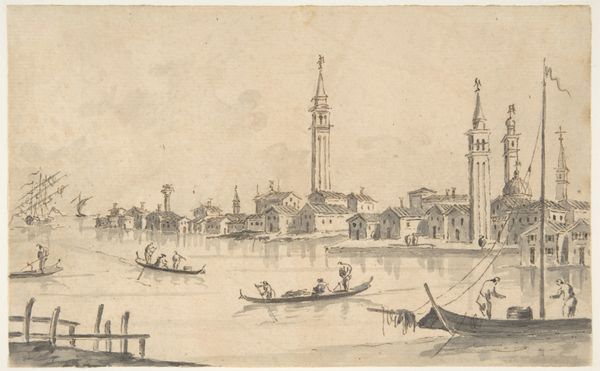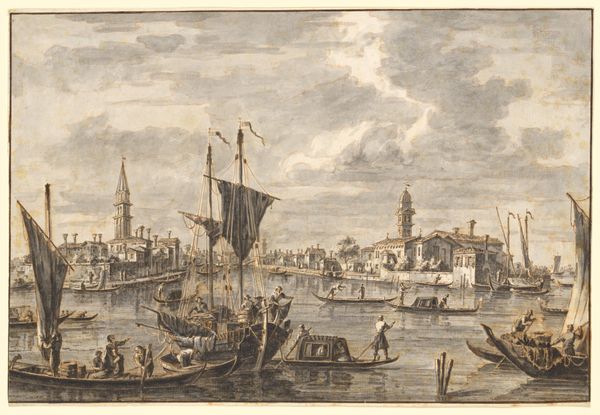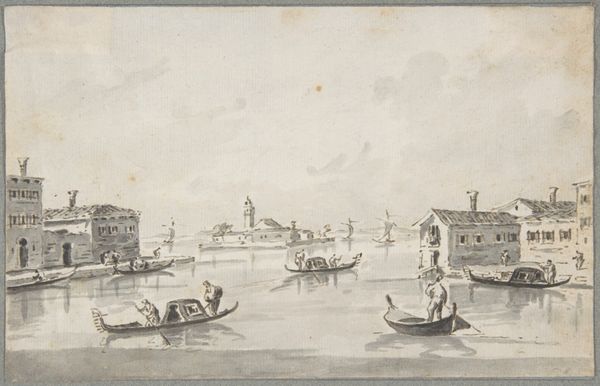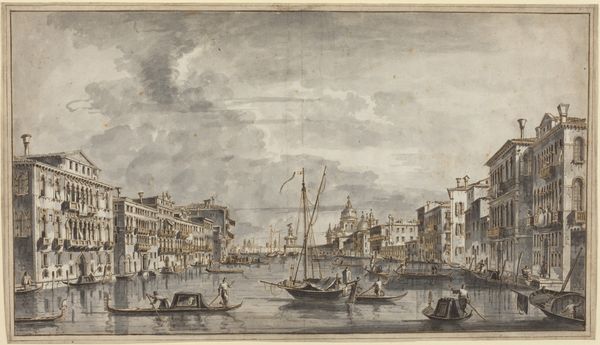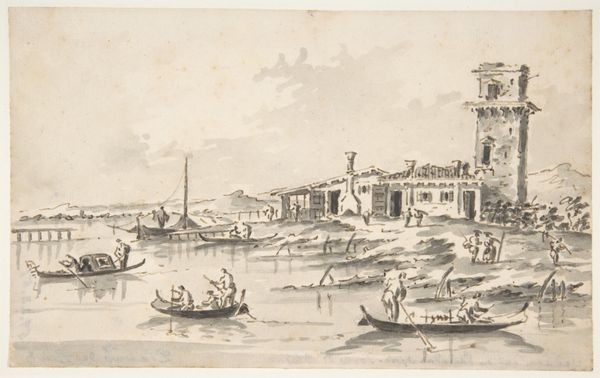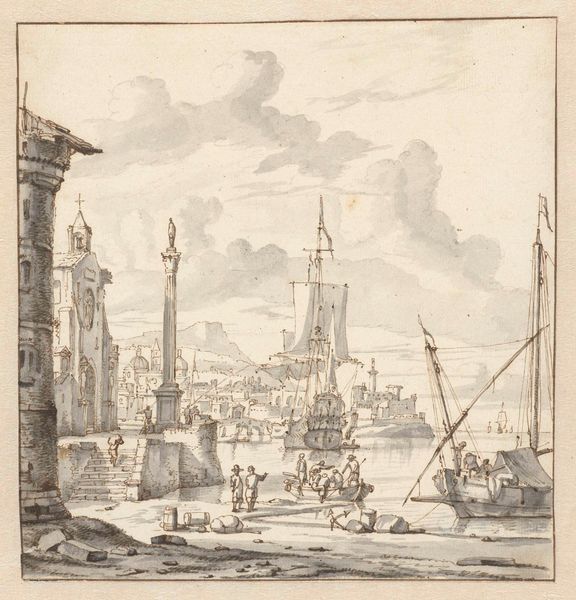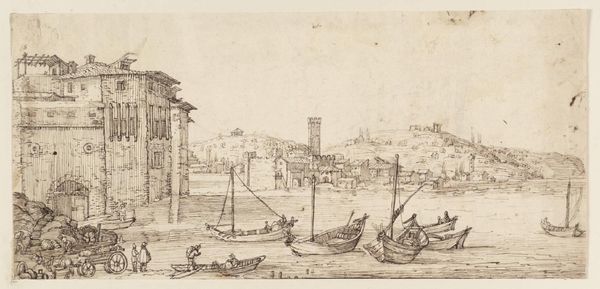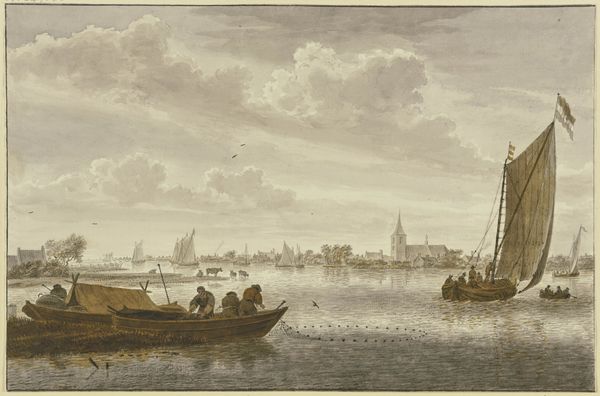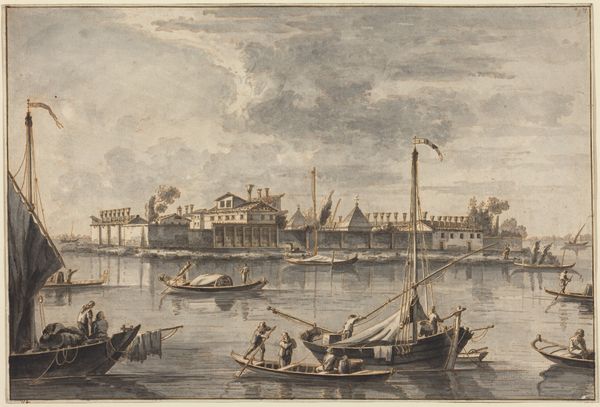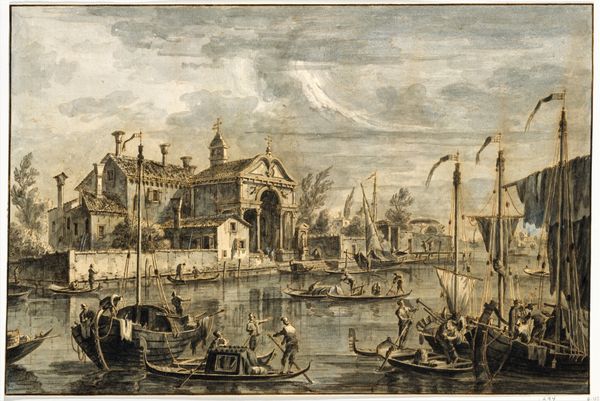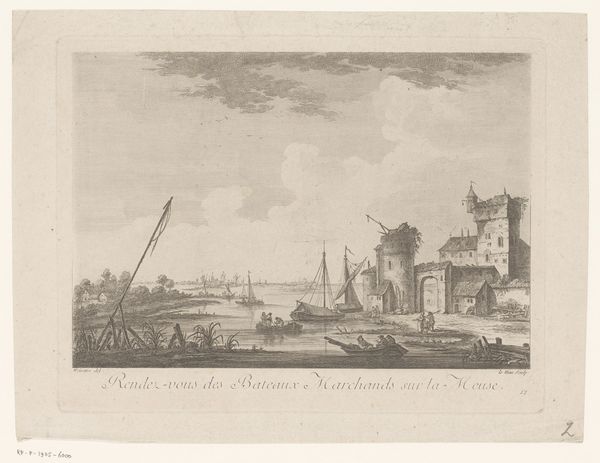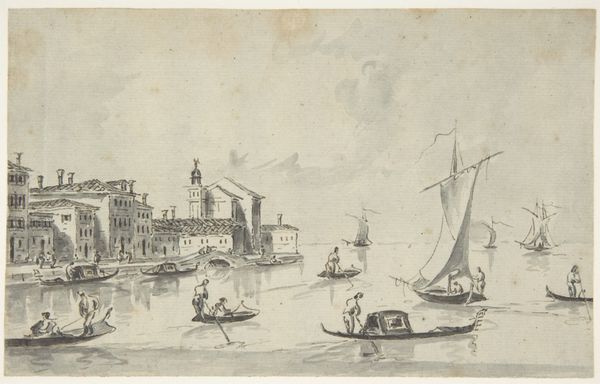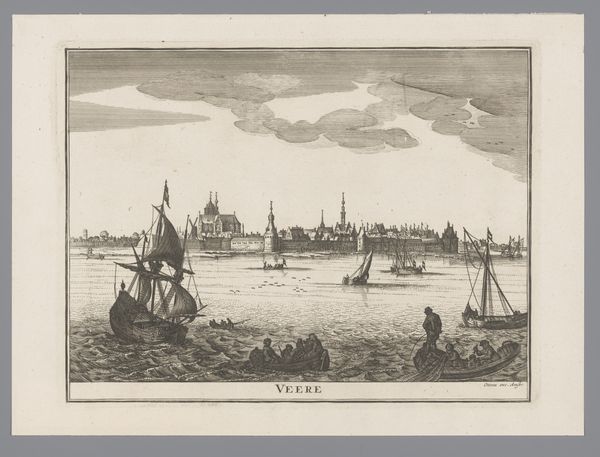
The Island of San Giorgio Maggiore, Venice 1764 - 1835
0:00
0:00
Dimensions: 7 1/16 x 8 5/8in. (18 x 21.9cm)
Copyright: Public Domain
Curator: This subtle yet captivating work is "The Island of San Giorgio Maggiore, Venice" by Giacomo Guardi, dating approximately from 1764 to 1835. The medium appears to be watercolor on paper. Editor: There’s a melancholic beauty to it. The delicate washes of color and intricate linework give a sense of depth, yet there's an almost ghostly quality. Curator: Yes, the Rococo style, seen through the lens of Venetian painting, is evident. Notice how Guardi employs loose brushstrokes to define the architectural details, quite typical of his workshop's methods of churning out marketable views of the city for visiting Grand Tourists. Editor: The prevalence of the gondolas is also telling, they appear almost like worker-bee activity alongside those grander vessels, hinting at the daily labor underpinning this romanticized cityscape. Venice was a site of intense class difference—to me, it invites reflections on those inequalities, with wealth being conveyed by both transport and property. Curator: Precisely. The perspective, the composition, they were carefully conceived. The artist is positioning Venice as a spectacle, and San Giorgio Maggiore becomes an important piece of visual branding. We must ask ourselves—who had the means to purchase these pieces and what ideas about Venice did these images reproduce and support? Editor: It feels deliberately constructed as a spectacle—even a product—that perpetuates certain ideals about Venetian life, which contrasts the grittier realities for the working class of Venice. It's like a film set projecting both allure and inaccessibility. Curator: Very astute observation. It makes one wonder about the role of Guardi’s workshop and his involvement, also – the possible commercial considerations related to these works. The repetitive rendering, for example – was it solely an artistic choice, or was it driven by economic pressures? We should also look into who supplied his paper or grinding medium for color. Editor: Absolutely. Considering its original setting, one also wonders what the production cost was and if child labor was part of the manufacturing? By investigating the material conditions behind the art, we can more fully grapple with it today. Curator: Indeed. Considering this analysis, seeing the drawing in person becomes a powerful experience. Editor: Yes, that historical understanding enriches and deepens what we can draw from viewing "The Island of San Giorgio Maggiore".
Comments
No comments
Be the first to comment and join the conversation on the ultimate creative platform.
